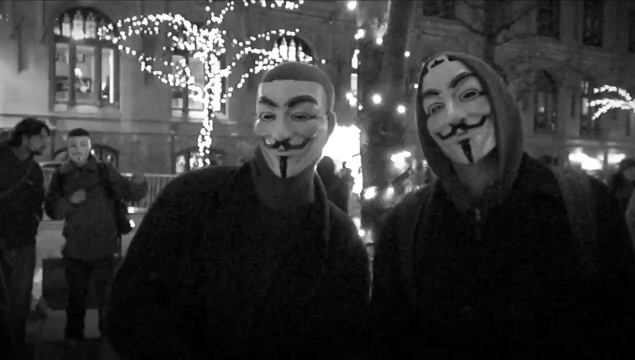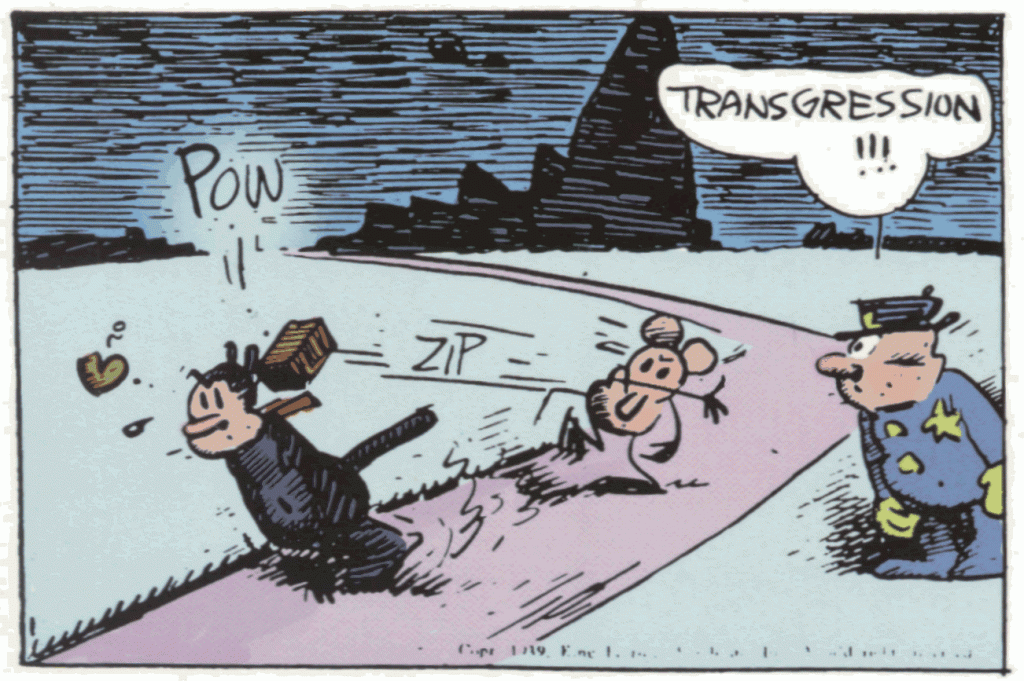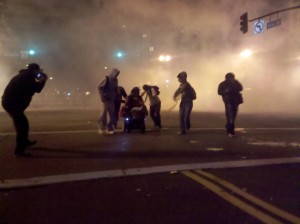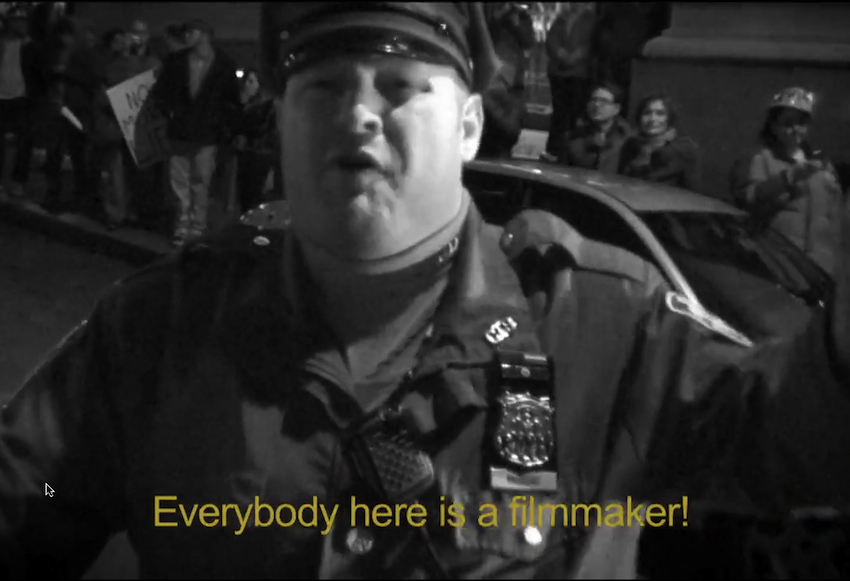The body in space where it is not intended to be is the Occupier. By chastising that body, the original occupation of the colonial police state intends to end the doubled state of Occupy. The two “classic” responses to state violence–carnival and organized non-violence–have been the most prominent means of resistance. Within the space of Occupy, new forms of non-conventional embodiment and self-visualization as bodies-that-think are in process.
Non-violence
Non-violence is the state-approved method of protest. When Mayor Kasim Reed shut down Occupy Atlanta in October 2011 he told reporters: “this kind of behavior isn’t consistent with my understanding and Atlanta’s understanding of traditional civil disobedience.” By this he appears to mean a march carried out where the police tell you to march, so that they can hit or spray you. As a tactic, this non-violence requires the protestor or occupier to submit to violence in order to demonstrate both their commitment to the cause and its moral superiority. It is a demonstration of mind over body in suitably Protestant form. As a thinking movement, Occupy is widely consensed on non-violence. The Occupy form of non-violence is, however, not that approved by the state. It assumes that non-violent bodies can act, not merely be passive recipients of violence. The body engaged in such action is also thinking. The simplest act of Occupy is emblematic: the protest march that occupies whichever sidewalk actors choose to use, using the freedom of public sidewalks, rather than following the prescribed police route, where protestors are so surrounded by cops that the action is in effect sealed.
Carnival and the Mask
To double the action of an actor is dangerous, it is said in Alexis. A Greek Tragedy. The danger is the old fear of the copy, the inauthentic and the mimic, which, by appearing similar to the original displaces the real. The double is out of place, uncanny to the police claiming to regulate the divide.
These two New Year’s Eve revelers are anonymous because they are masked. They are wearing Anonymous masks. Like most masquers, they are not unknown but the addition of the mask makes them into a threat. As Claire Tancons has pointed out, NYC police revived nineteenth-century laws against masks from the period of slavery in order to prevent Occupiers from masking. The carnival overturns the established regime, producing a world turned upside-down.
Authority has always been concerned that the brief autonomy of carnival might resist being turned back and has sought to prevent and contain it. This anxiety rests on the same weakness exposed by Occupy: how powerful can your authority be if the mere act of covering your face or pitching a tent can challenge it? State violence wants a properly abject object: a mocking, satirical costumed body makes the police look like Offissa Pup in Krazy Kat:
Occupy Dis/Ability
Less discussed in the violence-obsessed mainstream media but perhaps more significant in the long-term has been the interaction between Occupy and dis/ability of all kinds. As many dis/ability activists have said, we are the 99%: about one in five of those counted by the US census have a federally-recognized form of disability as defined by the 1990 Americans With Disabilities Act. Dis/ability activists stress that many more are temporarily disabled, such as a person with a sprained ankle or broken leg and that, as the population’s age profile increases, these numbers will only increase. Hearing impairment, for example, is close to universal now that so many spend their days plugged into amplified music players.
The dis/abled have joined with Occupy for many reasons:
- because government service cuts are leading to reduced services for dis/abled people
- because the movement defends civil rights, including those of people with dis/abilities
- because it is a means by which those dis/abled people subject to well-meaning discipline by NGOs and other organizations can “decolonize their voices“
Such groups cannot always be physically present at an Occupy site and may interface with the movement via Facebook pages such as “Krips Occupy Wall Street” and “Occupy Autism Speaks.” If you read across these pages for a while, you see that it makes no sense to speak of “one demand” for such diverse categories but also that this really is a different kind of movement. This thread of the movement extends to queer, trans, gender-queer and other non-conventional modalities of performed embodiment, as well as drug, alcohol and serotonin-uptake inhibitor dependent bodies. This survey predicts more investigation for us ahead.
Self-visualization
In guise of conclusion, we have the furious comment of an NYPD officer to filmmaker Jean Thevenin at Liberty Plaza on New Year’s Eve: “Everybody here is a filmmaker” He was responding to Thevenin’s request for access to the space because he was a filmmaker. What Occupy offers is an embodiment that visualizes itself both for its own sake and for that of others. As the Occupy Dis/ability network shows, that visualization is by no means limited to the encampments taken to embody Occupy. It is an act of self-visualizing that depends on the affirmation and invention of others to perform properly. It is what I have called the right to look.
Enjoy the celebration:
Everybody Here Is a Filmmaker (New Year’s Eve in Occupy Wall Street) from jaune! on Vimeo.




